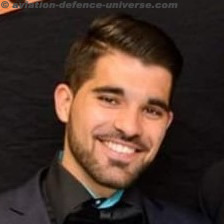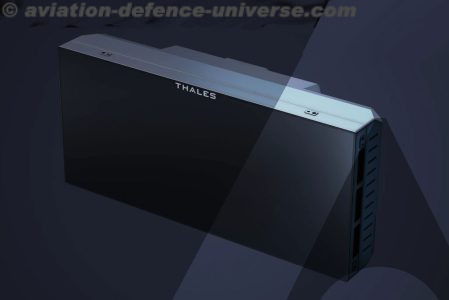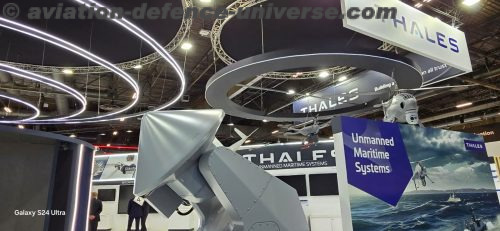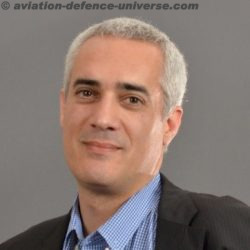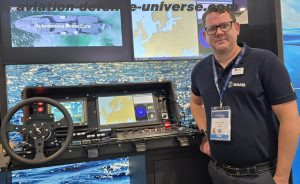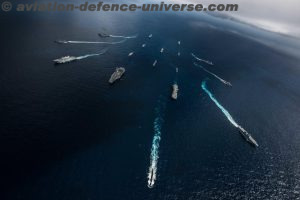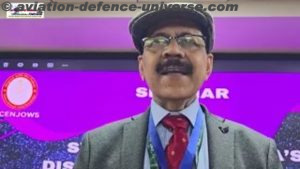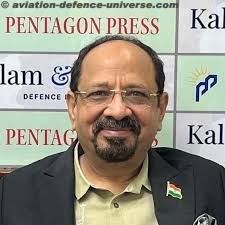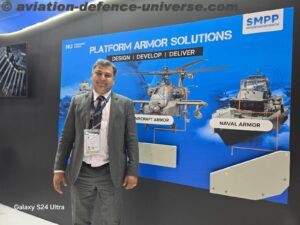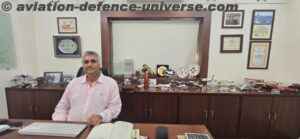- Nicolas Leger gives an insight on the Modular and AI-Powered Air Master C Radar
Paris/New Delhi. 16 November 2024. At the recently held Euronaval 2024 Thales showcased it’s new radar. In this interview, we spoke with Nicolas Leger, a radar engineer at Thales, who shares insights into the Air Master range of airborne surveillance radars, specifically the latest version, Air Master C. Designed as a 2D AESA radar, Air Master C aims to enhance airborne surveillance capabilities for both French military forces and international clients. Nicolas delves into the advanced features of the radar, including its lightweight design, smart AI functions, and adaptability for various manned and unmanned platforms. He also explains the incremental development approach adopted for refining the radar’s capabilities in response to evolving user needs.
ADU. Nicolas, can you tell us about the Air Master C and its unique features?
Nicolas Leger. Absolutely. The Air Master C is the latest addition to our Air Master range of airborne surveillance radars. It’s a 2D AESA radar specifically designed for the new generation of helicopters for the French forces and is also available for export. One of the key features of this radar is its fixed panel design, which eliminates the need for a gimbal. Each panel covers a 120-degree angle, and by using three panels, we achieve full 360-degree coverage. Notably, this version offers a 30% reduction in Size, Weight, and Power (SWaP) compared to competitor products, thanks to our C-G technology in the AESA antenna.
ADU. You mentioned integrating AI functions into this radar. Could you elaborate on this aspect?
Nicolas Leger. Yes, that’s correct. With advancements in radar technology, the complexity has increased significantly, leading to a wealth of data and numerous performance adjustments. This can overwhelm the end user with information. To address this, we collaborated with the French DGA and French Navy to incorporate artificial intelligence (AI) functions into our radar systems. We identified three main user expectations: autonomous radar operation, effective data deluge processing to highlight targets of interest, and self-learning capabilities that enhance performance over time.
ADU. Can you explain these three user expectations in more detail?
Nicolas Leger. Of course. The first expectation is for an autonomous radar system capable of transforming high-level tactical scenarios into specific technical commands automatically. The second is effective data deluge processing. With potentially thousands of tracks detected by the radar, users need assistance in identifying targets of interest. AI helps prioritize and highlight these targets. Lastly, self-learning capabilities enable the radar to continuously improve its performance without needing major upgrades every few years. Instead, it evolves incrementally based on real-world data and usage.
ADU. What progress has been made in integrating these AI functions into the radar system?
Nicolas Leger. We made significant strides in 2022 when we launched a flight demonstrator equipped with autonomy and data processing functions. We conducted five successful flights in 2023 using an Atlantic 2 aircraft and a Search Master radar. The feedback from users was very positive, and we are now working with the French Navy and DGA to integrate these functions into the Atlantic 2 fleet as a fully qualified product. The plan is to incrementally add more features over time, using a spiral development approach where each step builds on the results of the previous phase.
ADU. How adaptable is the Air Master C for different platforms, especially unmanned systems?
Nicolas Leger. The Air Master C is highly adaptable and can be integrated into both manned and unmanned airborne platforms. For instance, it’s set to be deployed on the Airbus H-116 helicopter for the French Navy and Air Force. The radar itself doesn’t require modifications based on whether the platform is manned or unmanned. The adaptation is more at the mission system level, where the teleoperation of the radar is managed. For smaller unmanned systems, we can adjust the configuration by using fewer panels, reducing weight but also limiting the coverage angle. This modular design allows us to tailor the radar setup to the specific needs of the platform.
ADU. Does the modular design of the radar impact its performance on smaller platforms?
Nicolas Leger. Yes, there is a trade-off between weight and coverage area. If we need to minimize the weight for a smaller unmanned platform, we can opt to use a single panel, which covers only 120 degrees instead of the full 360 degrees provided by three panels. For a full 360-degree coverage, the radar weighs around 47 kilograms. However, if the platform requirements allow for less coverage, we can reduce the weight to around 19 kilograms, making it highly versatile for various operational scenarios.
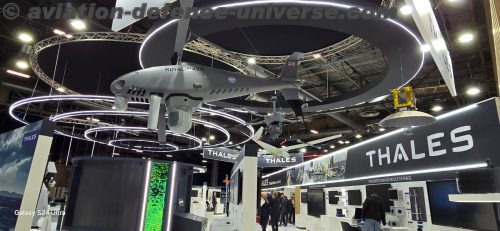 The Air Master C radar by Thales represents a significant advancement in airborne surveillance technology, particularly with its lightweight, modular design and integration of AI capabilities. Nicolas Leger’s insights underscore the company’s commitment to enhancing user experience and operational efficiency through smart radar functions and incremental, data-driven development. As the radar prepares for deployment on various manned and unmanned platforms, its adaptability and advanced features are set to meet the evolving demands of modern airborne surveillance.
The Air Master C radar by Thales represents a significant advancement in airborne surveillance technology, particularly with its lightweight, modular design and integration of AI capabilities. Nicolas Leger’s insights underscore the company’s commitment to enhancing user experience and operational efficiency through smart radar functions and incremental, data-driven development. As the radar prepares for deployment on various manned and unmanned platforms, its adaptability and advanced features are set to meet the evolving demands of modern airborne surveillance.
As told to Sangeeta Saxena






































